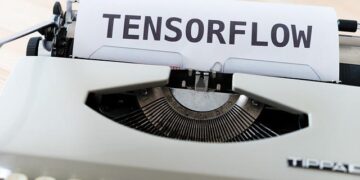Eskom’s new Homeflex tariff, introduced as part of its 2023/2024 plan, offers potential savings for households charging batteries outside peak hours. Despite challenges, such as limited net billing incentives during peak periods, users can benefit from lower off-peak rates. The tariff structure includes six time-of-use charges, encouraging off-peak consumption. However, the complexity and potential higher costs during peak periods might deter some users. Homeflex’s appeal lies in earning off-peak credits, providing an alternative for those generating excess electricity during the day. Eskom’s push for battery charging outside peak hours aims to alleviate grid pressure.
Sign up for your early morning brew of the BizNews Insider to keep you up to speed with the content that matters. The newsletter will land in your inbox at 5:30am weekdays. Register here.
By Hanno Labuschagne
A new tariff plan with electricity net-billing introduced by Eskom in the past year provides little incentive for households to feed power back into the grid but offers potential cost savings when charging batteries outside peak hours.
The Homeflex tariff was one of several changes that Eskom proposed for electricity tariffs about a year and a half ago.
The utility sent its proposals to the National Energy Regulator of South Africa (Nersa) in August 2022.
Among the proposals that captured most of the public’s attention were substantially increased network capacity charges detrimental to users who consume very little electricity — such as grid-tied solar users.
Eskom argued this was necessary because those with grid-tied solar and batteries were effectively paying subsidised tariffs by those without their own power.
However, Nersa disagreed with Eskom’s proposals, except for the introduction of the Homeflex tariffs, which Eskom published in its 2023/2024 tariff plan.
Eskom previously told MyBroadband that this tariff would be particularly appealing to solar power users.
Customers would benefit from much lower off-peak rates during the late evenings and early mornings when they could charge their batteries at more affordable rates if they run out of juice.
In addition to charging customers for consumed electricity on a time-of-use (TOU) basis instead of a flat rate, Homeflex supports net billing for electricity fed back into the grid.
Instead of a single rate, there are six different TOU charges for kWh consumed under the Homeflex plan.
Firstly, Eskom breaks the rates down between two seasons — High Demand for the winter period from June to August and Low Demand for the remaining months of the year.
Secondly, the time the electricity is consumed during the day determines whether it is charged at a peak, standard, or off-peak rate.
The table below summarises the charges applicable under the Homeflex plan.
The tariffs in front of the brackets are the Active Energy charges, the same rate at which Homeflex users earn credit.
The numbers in brackets include a combined network demand, ancillary service, and retail charge fee of R1.29, which is added onto the price of every kWh consumed.
Homeflex tariff plan 2023/2024PeakStandardOff-peakHigh Demand Season (June to August)TimesWeekdays:
06:00-09:00
17:00-19:00Weekdays:
09:00-17:00
19:00-22:00
Saturdays:
09:00-17:00
18:00-20:00Weekdays:
22:00-06:00
Saturdays:
20:00-07:00
12:00-18:00
Sundays:
All hoursChargesR6.24 (R7.53)R1.90 (R3.19)R1.04 (R2.33)Low Demand Season (September to May)TimesWeekdays:
07:00-10:00
18:00-20:00Weekdays:
06:00-07:00
10:00-18:00
20:00-22:00
Saturdays:
07:00-12:00
18:00-20:00Weekdays:
22:00-06:00
Saturdays:
20:00-07:00
Sundays:
All hoursChargesR2.04 (R3.33)R1.41 (R2.70)R0.90 (R2.19)

Unfortunately, you cannot use credits earned during peak hours — with the highest payout — to pay for cheaper electricity consumed in standard or off-peak hours.
Eskom will only provide a credit for energy exported “up to and equal to the consumption” per time-of-use period.
To benefit from the credit, you must consume electricity with the same value as the credit during the peak period.
However, consuming the same amount of electricity as you feed into the grid will cost slightly more than the credits you will get back for supplying the same amount of power, due to the combined network demand, ancillary service, and retail charges that come with consumption.
Eskom won’t refund you for any credit generated either, unlike the City of Cape Town, which pays households and businesses cash for their excess electricity.
Eskom wants batteries to charge outside peak
Based on the utility’s strict limitations on net billing, Eskom’s tariff plan does not incentivise feeding electricity back into the grid during peak periods, when its grid is under heavy pressure.
It seems to primarily discourage using the grid to charge batteries during peak hours, which should take off some pressure.
However, the differences in the cost of the off-peak tariff on Homeflex and the flat rate on Homepower are fairly negligible.
During the High Demand Season, the Homeflex off-peak tariff is R2.33, compared to the R2.50 paid by those on Homepower 4, the most common non-TOU Eskom Direct tariff.
Furthermore, the peak tariff rate is well over double the highest rate Homepower users will pay.
Many might regard the risk of paying substantially more if you have to charge during a peak period to be greater than the potential savings from off-peak rates and net billing.
The added complexity of navigating six different tariffs instead of one seems likely to further discourage switching from the Homepower tariffs.
The tariff could nonetheless benefit those users who can generate and supply excess electricity during the day and earn off-peak credits, which can then be used to offset the cost of recharging batteries in off-peak overnight hours.
Read also:
Eskom anticipates high risk of load-shedding in South Africa for 2023-2024
Eskom pulls the plug on Karpowership: Big setback in South Africa’s power push
Patrick McLaughlin exposes Eskom bill sabotage: Minister Mantashe’s hidden agenda unveiled
This article was first published by MyBroadband and is republished with permission
Visited 86 times, 86 visit(s) today
>>> Read full article>>>
Copyright for syndicated content belongs to the linked Source : BizNews – https://www.biznews.com/energy/2024/01/18/eskoms-homeflex-tariff-how-save-whats-catch































